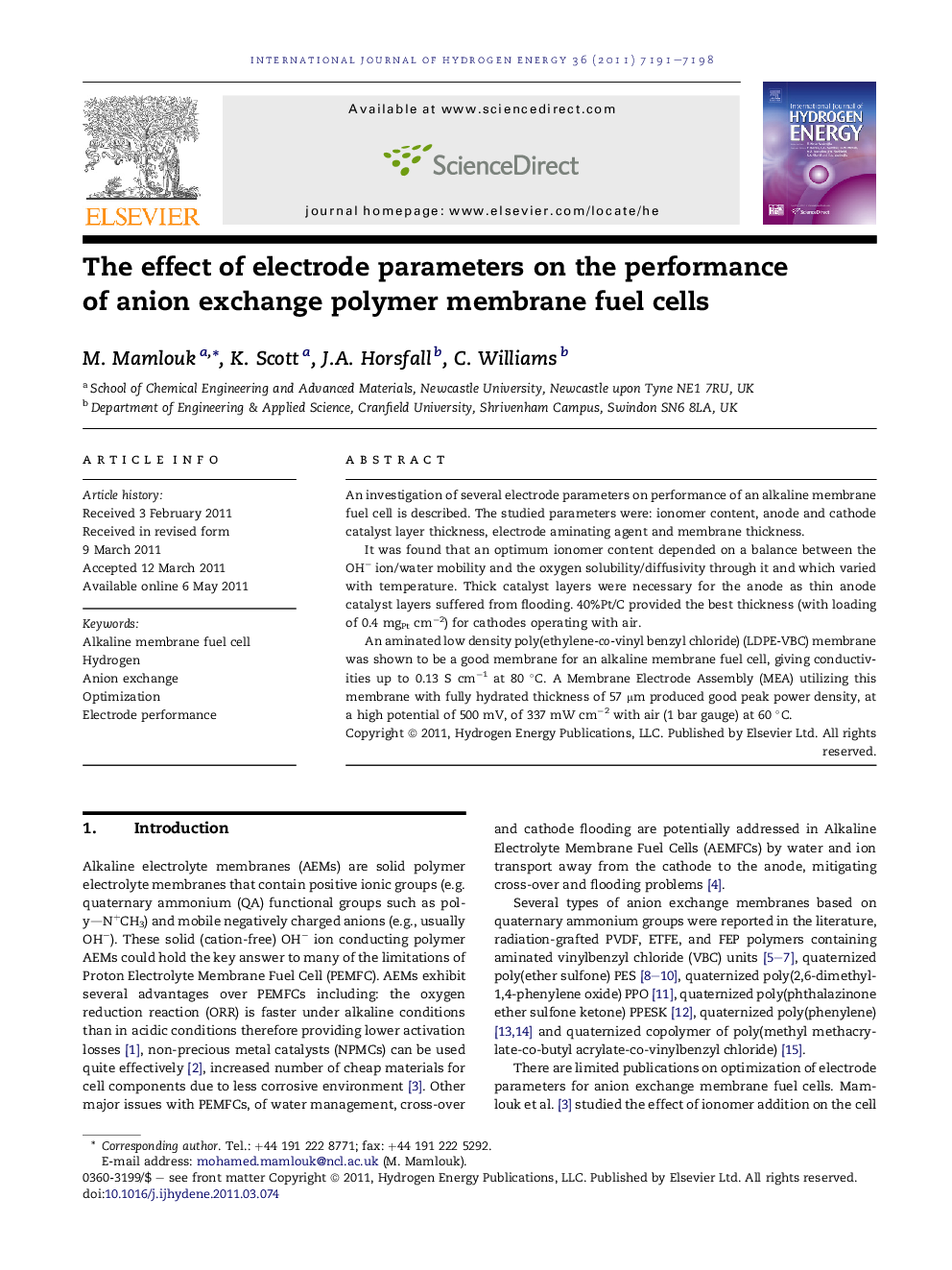| Article ID | Journal | Published Year | Pages | File Type |
|---|---|---|---|---|
| 1272108 | International Journal of Hydrogen Energy | 2011 | 8 Pages |
An investigation of several electrode parameters on performance of an alkaline membrane fuel cell is described. The studied parameters were: ionomer content, anode and cathode catalyst layer thickness, electrode aminating agent and membrane thickness.It was found that an optimum ionomer content depended on a balance between the OH− ion/water mobility and the oxygen solubility/diffusivity through it and which varied with temperature. Thick catalyst layers were necessary for the anode as thin anode catalyst layers suffered from flooding. 40%Pt/C provided the best thickness (with loading of 0.4 mgPt cm−2) for cathodes operating with air.An aminated low density poly(ethylene-co-vinyl benzyl chloride) (LDPE-VBC) membrane was shown to be a good membrane for an alkaline membrane fuel cell, giving conductivities up to 0.13 S cm−1 at 80 °C. A Membrane Electrode Assembly (MEA) utilizing this membrane with fully hydrated thickness of 57 μm produced good peak power density, at a high potential of 500 mV, of 337 mW cm−2 with air (1 bar gauge) at 60 °C.
